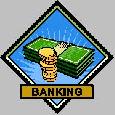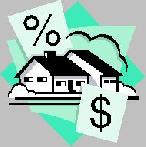
 |
|
| Financial Terms | |
| Fixed asset |
|
Information about financial, finance, business, accounting, payroll, inventory, investment, money, inventory control, stock trading, financial advisor, tax advisor, credit.
Main Page: payroll, inventory, stock trading, inventory control, financial, finance, business, tax advisor, |
Definition of Fixed asset
Fixed assetLong-lived property owned by a firm that is used by a firm in the production of its income. Fixed assetAn item with a longevity greater than one year, and which exceeds a company’s
Related Terms:Fixed asset turnover ratioThe ratio of sales to fixed assets. Fixed assetsThings that the business owns and are part of the business infrastructure – fixed assets may be Intangible fixed assetsNon-physical assets, e.g. customer goodwill or intellectual property (patents and trademarks). Tangible fixed assetsPhysical assets that can be seen and touched, e.g. buildings, machinery, vehicles, computers etc. fixed assetsAn informal term that refers to the variety of long-term operating Fixed Assets Turnover RatioA measure of the utilization of a company's fixed assets to  Fixed AssetsLand, buildings, plant, equipment, and other assets acquired for carrying on the business of a company with a life exceeding one year. Normally expressed in financial accounts at cost, less accumulated depreciation. Longer-Term Fixed Assetsassets having a useful life greater than one year but the duration of the 'long term' will vary with the context in which the term is applied. Cash flow from operationsA firm's net cash inflow resulting directly from its regular operations Margin callA demand for additional funds because of adverse price movement. Maintenance margin Monetary / non-monetary methodUnder this translation method, monetary items (e.g. cash, accounts Restrictive covenantsProvisions that place constraints on the operations of borrowers, such as restrictions on Accumulated depreciationA contra-fixed asset account representing the portion of the cost of a fixed asset that has been previously charged to expense. Each fixed asset account will have its own associated accumulated depreciation account. accelerated depreciation(1) The estimated useful life of the fixed asset being depreciated is investing activitiesOne of the three classes of cash flows reported in the  mark to marketRefers to the accounting method that records increases property, plant, and equipmentThis label is generally used in financial straight-line depreciationThis depreciation method allocates a uniform Total Asset Turnover RatioA measure of the utilization of all of a company's assets to Accumulated depreciationThe sum total of all deprecation expense recognized to date Capital assetA fixed asset, something that is expected to have long-term usage within Capital gainThe gain recognized on the sale of a capital item (fixed asset), calculated GoodwillThe excess of the price paid to buy another company over the book value of Leasehold improvementThis is any upgrade to leased property by a lessee that will be ObsolescenceThe reduction in utility of an inventory item or fixed asset. If it is an Other assetsA cluster of accounts that are listed after fixed assets on the balance sheet, Property, plant, and equipmentThis item is comprised of all types of fixed assets Salvage valueThe expected revenue to be garnered from the sale of a fixed asset at the Useful lifeThe estimated life span of a fixed asset, during which it can be expected to Change in Accounting EstimateA change in accounting that occurs as the result of new information Change in Accounting EstimateA change in the implementation of an existing accounting Business Expansion InvestmentThe use of capital to create more money through the addition of fixed assets or through income producing vehicles. Capital InvestmentsMoney used to purchase fixed assets for a business, such as land, buildings, or machinery. Also, money invested in a business on the understanding that it will be used to purchase permanent assets rather than to cover day-to-day operating expenses. CapitalizeIn Finance: to find the present value of a stream of cash flows. DepreciationAmortization of fixed assets, such as plant and equipment, so as to allocate the cost over their depreciable life. LeasingContract granting use of real estate, equipment, or other fixed assets for a specified time in exchange for payment, usually in the form of rent. The owner of the leased property is called the lessor, the user the lessee. Lease (Credit Insurance)Contract granting use of real estate, equipment or other fixed assets for a specified period of time in exchange for payment. The owner or a leased property is the lessor and the user the lessee. Acquisition of assetsA merger or consolidation in which an acquirer purchases the selling firm's assets. AssetAny possession that has value in an exchange. Asset/equity ratioThe ratio of total assets to stockholder equity. Asset/liability managementAlso called surplus management, the task of managing funds of a financial Asset activity ratiosRatios that measure how effectively the firm is managing its assets. Asset allocation decisionThe decision regarding how an institution's funds should be distributed among the Asset-backed securityA security that is collateralized by loans, leases, receivables, or installment contracts Asset-based financingMethods of financing in which lenders and equity investors look principally to the Asset classesCategories of assets, such as stocks, bonds, real estate and foreign securities. Asset-coverage testA bond indenture restriction that permits additional borrowing on if the ratio of assets to Asset for asset swapCreditors exchange the debt of one defaulting borrower for the debt of another Asset pricing modelA model for determining the required rate of return on an asset. Asset substitutionA firm's investing in assets that are riskier than those that the debtholders expected. Asset substitution problemArises when the stockholders substitute riskier assets for the firm's existing Asset swapAn interest rate swap used to alter the cash flow characteristics of an institution's assets so as to Asset turnoverThe ratio of net sales to total assets. Asset pricing modelA model, such as the Capital asset Pricing Model (CAPM), that determines the required AssetsA firm's productive resources. Assets requirementsA common element of a financial plan that describes projected capital spending and the Capital asset pricing model (CAPM)An economic theory that describes the relationship between risk and Current assetsValue of cash, accounts receivable, inventories, marketable securities and other assets that Dynamic asset allocationAn asset allocation strategy in which the asset mix is mechanistically shifted in Exchange of assetsAcquisition of another company by purchase of its assets in exchange for cash or stock. Financial assetsClaims on real assets. Fixed costA cost that is fixed in total for a given period of time and for given production levels. Fixed-annuitiesAnnuity contracts in which the insurance company or issuing financial institution pays a Fixed-charge coverage ratioA measure of a firm's ability to meet its fixed-charge obligations: the ratio of Fixed-datesIn the Euromarket the standard periods for which Euros are traded (1 month out to a year out) are Fixed-dollar obligationsConventional bonds for which the coupon rate is set as a fixed percentage of the par value. Fixed-dollar securityA nonnegotiable debt security that can be redeemed at some fixed price or according to Fixed-exchange rateA country's decision to tie the value of its currency to another country's currency, gold Fixed-income equivalentAlso called a busted convertible, a convertible security that is trading like a straight Fixed-income instrumentsassets that pay a fixed-dollar amount, such as bonds and preferred stock. Fixed-income marketThe market for trading bonds and preferred stock. Fixed price basisAn offering of securities at a fixed price. Fixed-price tender offerA one-time offer to purchase a stated number of shares at a stated fixed price, Fixed-rate loanA loan on which the rate paid by the borrower is fixed for the life of the loan. Fixed-rate payerIn an interest rate swap the counterparty who pays a fixed rate, usually in exchange for a Intangible assetA legal claim to some future benefit, typically a claim to future cash. Goodwill, intellectual Liquid assetasset that is easily and cheaply turned into cash - notably cash itself and short-term securities. Long-term assetsValue of property, equipment and other capital assets minus the depreciation. This is an Limitation on asset dispositionsA bond covenant that restricts in some way a firm's ability to sell major assets. Net asset value (NAV)The value of a fund's investments. For a mutual fund, the net asset value per share Net assetsThe difference between total assets on the one hand and current liabilities and noncapitalized longterm Non-reproducible assetsA tangible asset with unique physical properties, like a parcel of land, a mine, or a Other current assetsValue of non-cash assets, including prepaid expenses and accounts receivable, due Policy asset allocationA long-term asset allocation method, in which the investor seeks to assess an Publicly traded assetsassets that can be traded in a public market, such as the stock market. Quick assetsCurrent assets minus inventories. Real assetsIdentifiable assets, such as buildings, equipment, patents, and trademarks, as distinguished from a Reproducible assetsA tangible asset with physical properties that can be reproduced, such as a building or Residual assetsassets that remain after sufficient assets are dedicated to meet all senior debtholder's claims in full. Return on assets (ROA)Indicator of profitability. Determined by dividing net income for the past 12 months Return on total assetsThe ratio of earnings available to common stockholders to total assets. Riskless or risk-free assetAn asset whose future return is known today with certainty. The risk free asset is Risky assetAn asset whose future return is uncertain. Risk-free assetAn asset whose future return is known today with certainty. Tactical Asset Allocation (TAA)An asset allocation strategy that allows active departures from the normal Tangible assetAn asset whose value depends on particular physical properties. These i nclude reproducible Total asset turnoverThe ratio of net sales to total assets. Underlying assetThe asset that an option gives the option holder the right to buy or to sell. Related to : financial, finance, business, accounting, payroll, inventory, investment, money, inventory control, stock trading, financial advisor, tax advisor, credit. |